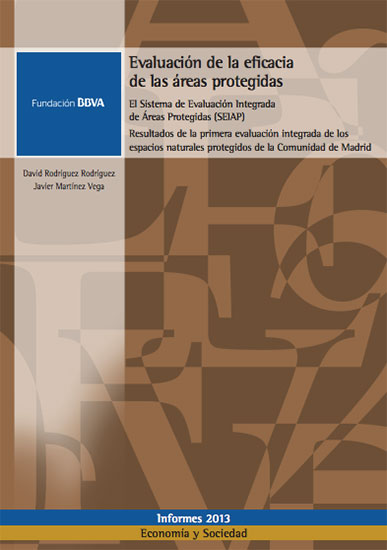
PublicationReports
Evaluación de la eficacia de las áreas protegidas
El Sistema de Evaluación Integrada de Áreas Protegidas. Resultados de la primera evaluación integrada de los espacios naturales protegidos de la Comunidad de Madrid
Protected areas are considered the main strategy for biodiversity conservation. Consequently, the number and extent of protected areas have increased exponentially since the 1950s to cover approximately 13% of the world’s terrestrial area. As a result of this trend, the conservation of biodiversity and related ecosystem services have become one of the major land uses globally. And something similar has happened in Spain, where over 25% of national territory is currently protected under the Natura 2000 Network. Paradoxically, the global status of biodiversity is getting worse, with an increasing number of habitats, species and genetic varieties becoming extinct or endangered.
These facts seem to uphold that protected area effectiveness has, on many occasions, been more an assumption than a reality. The accelerating rate of biodiversity loss urges us, according to the Precautionary Principle, to develop useful tools that allow protected area managers and protected area network managers to estimate protected area effectiveness in an objective, integrated and comparable manner.
This monograph presents the methodology underpinning the System for the Integrated Assessment of Protected Areas (SIAPA) so it can be disseminated and eventually implemented in Spanish-speaking parts of the world.
It also shows the results of the pilot implementation of the SIAPA in the protected areas of the Autonomous Region of Madrid, a Spanish region experiencing intense pressures on its environment.
